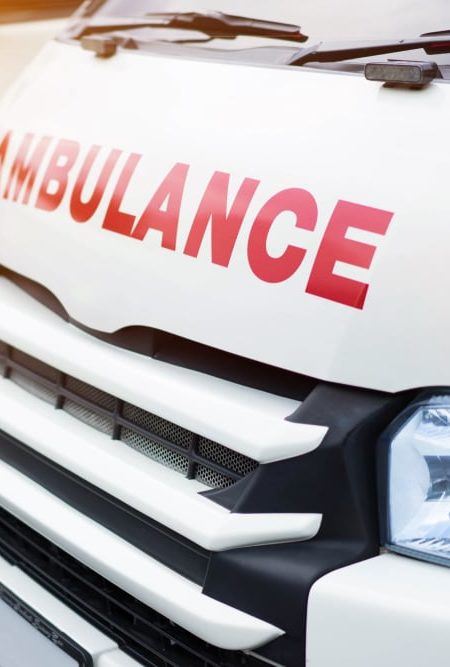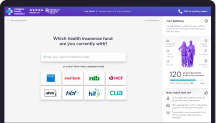You might not instinctively think about ambulance coverage as a priority when you first sign up for your health fund, but we strongly recommend that you consider this as early as possible to avoid unexpected out-of-pocket expenses in times of crisis.
Currently, there are tens of millions of dollars in unpaid ambulance bills in Australia with Sydney residents being one of the worst offenders [5].
It’s important that you know what you are covered for, what restriction apply, and how your coverage might change when you move to a different state.
According to a recent survey, almost one-third of Australians mistakenly think ambulances are covered by Medicare. Ambulance costs are not covered under Medicare and subsidies from the government could be limited (depending on the state).
For Queensland residents and Tasmanians, ambulances are fully subsidised by the government [2].
While these services are relatively cheaper for NSW residents ($349 plus $3.15/kilometre), knowing what benefits you are or are not entitled to will allow you to make smart choices and save hundreds, if not thousands, of dollars. Even if someone else calls an ambulance on your behalf and you refuse service, you might still be charged for it [3].
For NSW residents, we’ve outlined here what you can expect when calling triple zero (000), aka the NSW Ambulance agency, and how you can ensure you have proper health covers with great ambulance policies ahead of time. You never know when you’ll be one of the 1 million in NSW who uses ambulance services each year!
If you want to know more about ambulance services and insurance coverage in Victoria, please see our article here.
Overview of the State Ambulance Service and Trends in NSW
There are about 250 ambulance stations across NSW. Those in metropolitan areas offer 24-hour service while ones in more remote areas have on-call staff instead.
There are 9 priority codes [1]:
- Code 1: Emergency (highest priority) – Life-threatening cases such as cardiac arrests, ineffective breathing or unconsciousness, serious haemorrhage, chest or neck injury
- Code 2: Urgent – Severe pain such as abdominal pain or arm/leg injury
- Code 3: Time-critical – Medical response requested by medical practitioners
- Codes 4-9: Non-emergency – Routine non-emergency transport
The demand for priority one and two have been increasing at around 2% annually from 2012 due to the ageing population. This is expected to continue rising as the number of people aged over 65 is forecast to grow by over 67% over the next two decades.
NSW Ambulance has introduced the following initiatives to improve the workload, response time and patient care [1]:
- The Healthdirect Australia telephone advice line for non-urgent medical enquiries (1800 022 222)
- Non-emergency patient transport now removed from NSW Ambulance (Go to the Patient Transport Service site to learn more)
- Enabling paramedics to refer and transport patients to non-hospital emergency departments
- Extended Care Paramedics specialising in addressing less urgent, common medical issues
Run Down of Ambulance Costs and Government Benefits
Below table outlines the standard cost structure for ambulatory services in NSW as of January 2019 [4].
For NSW Residents (costs for non-NSW residents in parentheses):
| Road, Fixed Wing, Helicopter | Road | |
|---|---|---|
| Emergency | Non-emergency | |
| Call-out fee | $382 ($748) | $301 ($301) |
| Variable rate* (p/km) | $3.44 ($6.75 | $1.86 ($1.86) |
| Maximum charge | $6,258 (N/A) | $6,258 (N/A) |
*kilometres based on the round trip between the ambulance station, pick-up address, destination and return to the ambulance station [3]
NSW residents are responsible for 51% of the total costs and the state government subsidises 49% [4].
Individuals Exempt from Ambulance Fees
According to the NSW State Government website, “Pensioners, health care or Commonwealth seniors health cards or concession card holders, Veterans and individuals who hold basic private health insurance or ‘ambulance only’ cover [sic] (for low-income earners) will remain exempt from ambulance fees in NSW.”
We’d like to highlight that certain individuals in unique situations are exempt from ambulance fees such as:
- Victims of sexual assault, domestic violence or child abuse
- Youths in the care of the State
- Patients being taken involuntarily to mental health facilities
To view the full list of exemption criteria, go here.
Finding the Right Private Ambulance Covers in NSW
You can set up an ambulance subscription through NSW State Ambulance Insurance Plan or ambulance covers with any registered private health fund.
If you’re looking for private health covers including ambulance services, here are the things you should consider:
- Interstate travel: Normally you are only covered in the state in which you are a resident so if you travel across the northern territory or the country, you might want to opt in for travel insurance. Remember that there are often no maximum charges set by the state government for non-residents.
- Emergency ambulance transportation and/or ambulance treatment: While many health insurance providers offer unlimited or capped ambulance covers, some of them impose restrictions on the scope of emergency ambulance services (i.e. conditions on ambulance treatment received or type of ambulance transport) so be sure to check.
- Restrictions on non-emergency ambulance transportation and/or ambulance treatment: Private health funds will often restrict covers for (depending on the fund and your policy/membership level) non-emergency ambulance services. Certain insurance policies could completely exclude non-emergency ambulance cover.
- Waiting period: Keep in mind that there are waiting periods also applied to ambulance covers. If you call an ambulance for pre-existing conditions, then there is a 12-month waiting period (same as regular hospital covers). The waiting period for emergency ambulance services is often within a few days and for non-emergency ambulance services, it’s normally within 2-3 months.
- Included in hospital covers or extras covers vs. separate ambulance covers: More often than not, you can get ambulance services included in your hospital or extras covers but some insurers such as Bupa and HCF
offer stand-alone ambulance covers (so does NSW State Ambulance Subscription Plan) - Ambulance insurance costs: Obviously cost is a big factor – you want to get the most bang for your buck. So for each insurer you consider, compare the cover levels comprehensively. These costs are based on the state you live in (as each state charges very different call-out fees), your plan (single or family), your income level, and your eligibility for the Australian Government rebates.
It’s a lot of research but diligence always pays off. If you need help with the search, do not hesitate to act now and chat with our agent to get advice on finding the right ambulance covers!
Sources
[1] https://www.audit.nsw.gov.au/publications/latest-reports/managing-demand-for-ambulance-services
[3] https://www.abc.net.au/news/2018-07-20/ambulance-fees-around-australia/10015172
[4] http://www.ambulance.nsw.gov.au/Accounts–Fees/Fees-and-Charges.html





